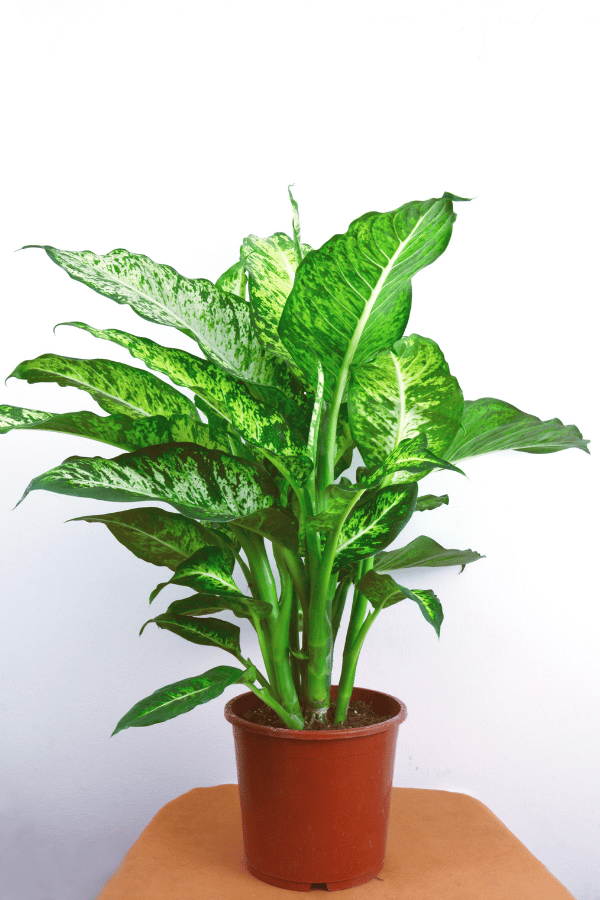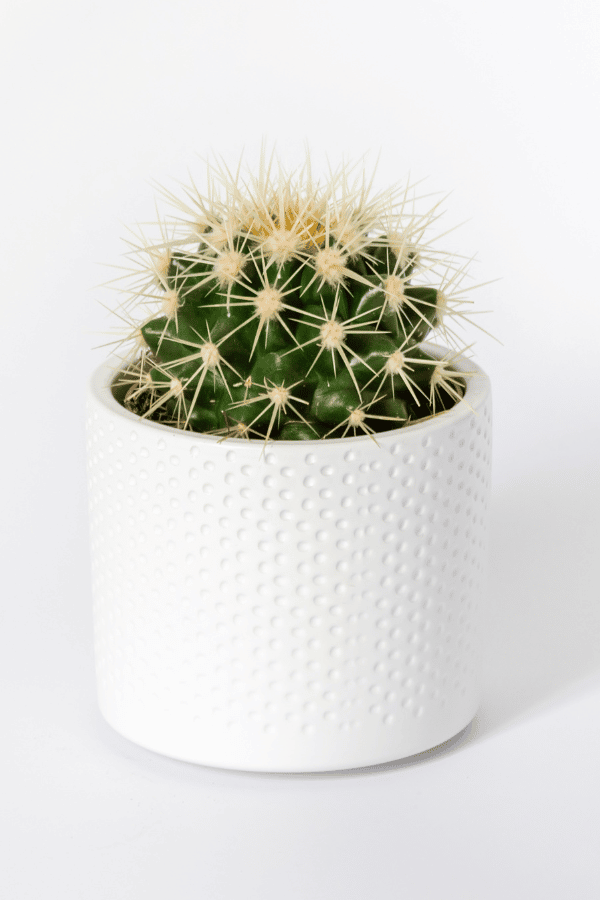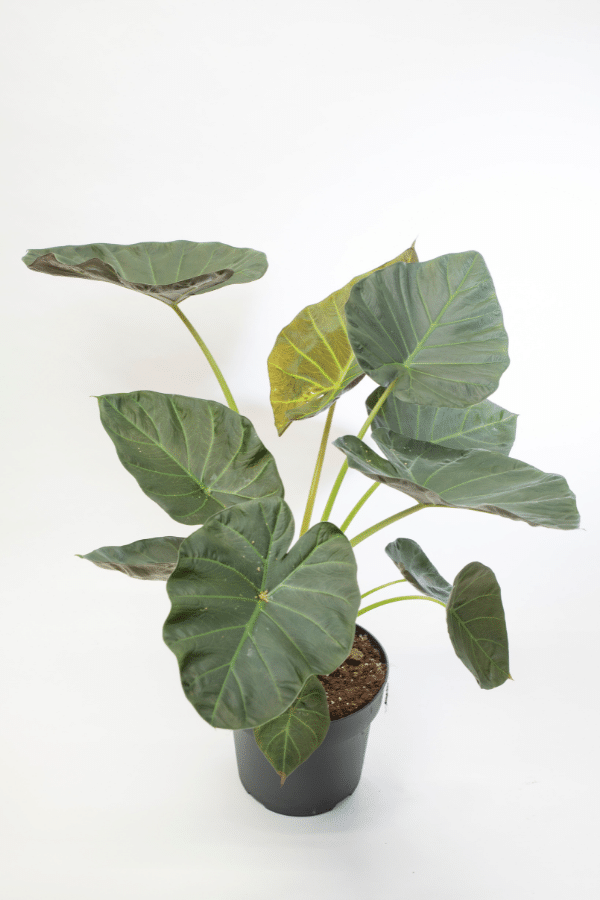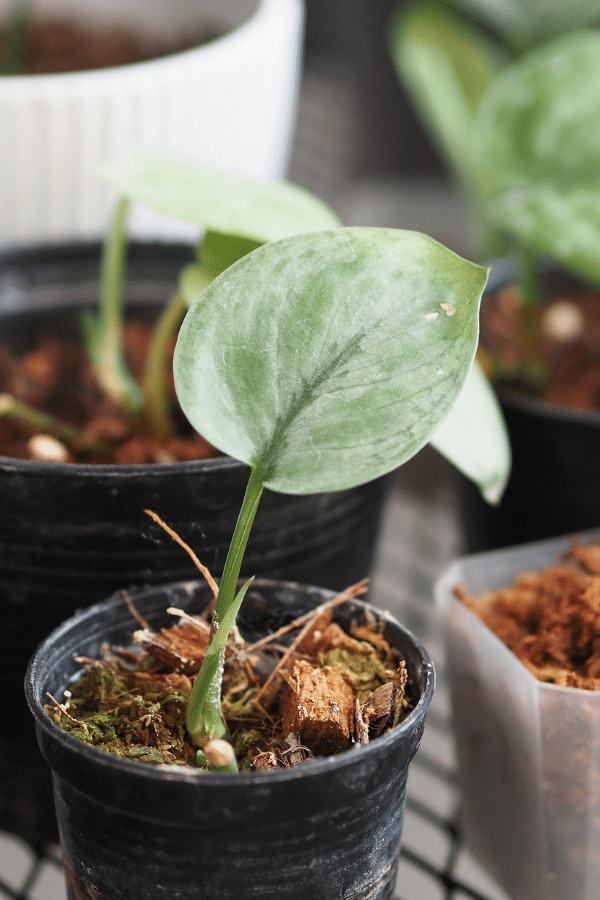Philodendron Pink Princess
Scientific Name: Philodendron Pink Princess
Common Name: Philodendron Pink Princess
Philodendron Pink Princess care is an easy Philodendron to grow and care for. If you want a houseplant that will give you pops of color with dark green to almost black leaves with splashes of bright pink, a Pink Princess Philodendron could be your next favorite houseplant!
To give this Philodendron plant the best care, it requires well-draining soil that is rich in nutrients, allow the soil to dry out before watering, provide it with bright indirect sunlight, temperatures ranging from 65-80F, and average to high humidity levels.
Quick Care Overview
| Common Name | Philodendron Pink Princess |
| Scientific Name | Philodendron Pink Princess |
| Family | Araceae |
| Origin | South America |
| Growth Rate | Medium |
| Identification | Dark green leaves with bright pink pops of color |
| Height | Up to 4 feet tall |
| Soil | Well-draining soil |
| Water | Allow soil to dry out before watering |
| Temperature | 65-80F |
| Sunlight | Bright indirect sunlight |
| Toxic to Cats & Dogs | Yes |
| Toxic to Humans | Yes |
| Pests | Mealybugs, aphids, spider mites, fungus gnats |
| Diseases | Root rot |
Below we will dive deep into this Philodendron Pink Princess care guide.
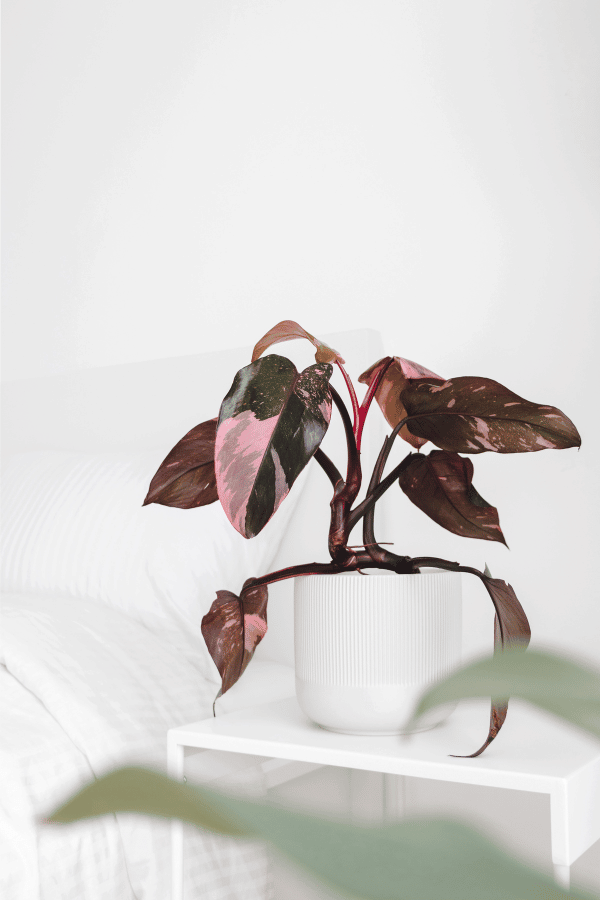
Philodendron Pink Princess History
Columbian native, Philodendron Erubescens ‘Pink Princess’ is a highly sought-after gorgeous aroid with pink variegation that often comes with a high price tag. Take a look at this gorgeous pink plant and you’ll see why it is a prized addition to many houseplant collectors’ collections.
Philodendron Pink Princess Identification
Philodendron Erubescens presents with variegated dark-green, lush, heart-shaped leaves that pop with shades of bright pink. This climbing plant adds a gorgeous, unique tough of greenery to any room.
Philodendron Pink Princess Growth Facts
The Pink Princess plant is easy to care for and stays compact making it a perfect piece for avid gardeners and beginning houseplant collectors alike.
How Big Does a Philodendron Pink Princess Get?
Pink Princess Philodendron can grow up to 4 feet tall and 4 feet wide.
Pink Princess Philodendron Care
Philodendron Erubescens is quite easy to care for. Just ensure that you do not overwater and give this Philodendron plenty of ample sunlight.
Philodendron Pink Princess Soil
Philodendron Pink Princess will enjoy being grown in a rich, well-draining, airy growing medium. You can make your own soil mixture by combining perlite, orchid bark, and commercial potting soil at a 1:1:1 ratio.
Philodendron Pink Princess Fertilizer
Philodendron Pink Princess will benefit from a once-monthly applying a balanced liquid fertilizer indicated for houseplants during the active growing season. Do not feed your Philodendron in fall or winter during its dormancy period.
Philodendron Pink Princess Watering
Philodendron Pink Princess is quite sensitive to overwatering and is easily susceptible to root rot. Therefore, it is better to slightly underwater your Philodendron than overwater it. You should allow the top half of the soil to dry completely before rewatering. If you are unsure whether or not to water your Pink Princess, it is better to wait another day.
Philodendron Pink Princess Light Requirements
Providing your Philodendron Pink Princess with plenty of bright indirect light is essential in delivering the care it needs to produce brilliant, variegated foliage. You Philodendron should be allowed to have several hours of indirect light and up to a few hours of direct light daily. If you do not have enough light exposure in your home, you should supplement your plant with a grow light. Philodendron Pink Princess will quickly lose its gorgeous pink leaves and revert back to green without ample daily light.
Philodendron Pink Princess Temperature & Humidity
As a tropical plant, Philodendron Pink Princess will prefer to always remain in warm, humid conditions. However, this hardy Philodendron will tolerate average household humidity, but they would love a humidifier. Philodendron Pink Princess likes to be kept between 65 to 80F. Avoid allowing your Philodendron to reach temperatures below 60 degrees Fahrenheit.
Repotting Philodendron Pink Princess
The Pink Princess plant should be repotted every 1-2 years. Select the next size larger container or a pot that is one to two inches larger than the previous container with drainage holes. Repot your plant, refresh the soil, water thoroughly, and place in bright indirect light. Watch out for new growth!
Philodendron Pink Princess Maintenance & Pruning
The Pink Princess plant will not require much pruning. Periodically, check your Philodendron for any dead, diseased, or discolored foliage and remove using sharp, clean pruning scissors.
Philodendron Pink Princess Propagation
Philodendron Pink Princess can be easily propagated through stem cuttings. Additionally, propagation may also help lead to a bushier plant and help encourage variegation. To propagate, select a mature stem piece with 2-3 leaves and 2-3 exposed nodes at the bottom of the cutting. Take the cutting using sterilized, sharp shears. Remove the bottom leaves from the stem of the cutting and allow the cutting(s) to rest overnight to callus. Next, place the callused cutting(s) into water and place into indirect light. If the water becomes murky, change it, and ensure the exposed nodes remain submerged at all times. Within a few weeks, you should notice roots forming. When the roots have become at least 1″ long, you should transfer your cuttings to soil. Water thoroughly and place in indirect light.

Philodendron Pink Princess Toxicity
Like many other philodendron varieties, the Pink Process is toxic due to calcium oxalate crystals. Wash hands after handling this plant or better yet, wear gloves when handling.
Toxicity to Humans
Like many other Philodendrons, the Pink Princess plant is considered toxic to humans due to its calcium oxalate crystal content. This plant should not be ingested.
Toxicity to Cats & Dogs
Philodendron Pink Princess is considered toxic to pets and should never be consumed. However, if you suspect your cat or dog has ingested any portion of this plant, contact your veterinarian or animal poison control immediately.
Philodendron Pink Princess Problems
Philodendron Pink Princess Leaves Turning Yellow
When the leaves of the Pink Princess plant turn yellow, it is often due to a lack of sunlight or watering issues.
Philodendron Pink Princess Leaves Turning Brown
When the foliage of Philodendron Pink Princess turns brown, it is typically due to a lack of humidity or underwatering. Alternatively, browning could be due to too intense direct sunlight.
Philodendron Pink Princess Diseases
Philodendron ‘Pink Princess’ may become susceptible to several plant diseases. The most common issue this Philodendron may face is root rot or rust spot, often due to overwatering.
Philodendron Pink Princess Pests
Philodendron Pink Princess, like many other indoor houseplants, may become susceptible to indoor plant pests such as fungus gnats, scale, spider mites, aphids, or mealybugs. Upon identifying an infestation, isolate your plant and treat it with a pesticide, such as neem oil or insecticidal soap.

